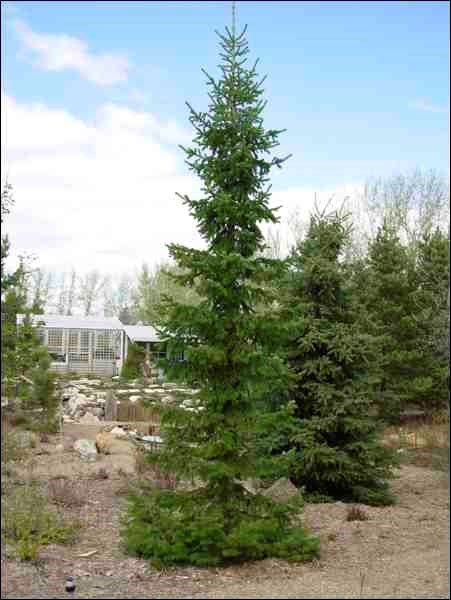If you're tired of the ubiquitous Colorado spruce, why not try a different conifer to add interest to your yard and contribute to the neighbourhood's uniqueness. While most conifers need space and are better suited to larger landscapes, a few are perfectly suited to smaller urban lots. The following three are drought-tolerant once established and do well in full sun on well-drained soil.
If ever a tree should have much wider availability and use, it's subalpine fir (Abies lasiocarpa). A handsome evergreen with dense, bright green, flat needles that are exceptionally soft, subalpine fir has a stately narrow form and a spread of only two to three metres.
Abies is from the Latin word abire, "to rise", a reference to its height (15 metres), while lasiocarpa is from the Greek words, lasios meaning "shaggy," and carpos, "fruit", describing the attractive, dark purple oblong cones of about 7.5 centimetres. The bark is smooth and ash-grey. Its relatively slender girth makes it suitable for both large and small areas, as a specimen tree, for screening, or hiding utility poles. But note: it is not tolerant of wet conditions. So plant in a well drained location (i.e. no ponding) and, except in the driest years, it does not require supplemental irrigation once established.
If space allows, Siberian larch (Larix sibirica) should be high on your wish list. It is a large, fast growing tree, up to 18 metres tall that retains a pyramidal form and almost perfect symmetry throughout its life. The branches arch gracefully down, turning up at their tips. As its name implies, this species is native to Siberia and northeast Russia. It is much better adapted to dry conditions than its relative, our own tamarack (Larix laricina).
The needles are soft, bright green and flexible. On new growth, the needles are single and spirally arranged along the branch. On older growth, needles form dense bundles on short pegs. Like other larches, the Siberian larch is deciduous, loosing its needles each fall. In spring, new growth is early and a lovely soft green. Fall color is an outstanding golden yellow.
The male cones look like short catkins and wither once the pollen is shed. The female cones resemble small wooden rosettes and persist on the naked branches throughout the winter, maturing in one season.
Because of its size, the Siberian larch is well suited as a specimen tree in larger urban yards, acreages and farm plantings. It is also used in shelterbelts where it establishes quickly. The fall color contrasts well with evergreens and the purple-red foliage of other trees and shrubs.
Sometimes difficult to find, Black Hills spruce (Picea glauca var. densata) is an excellent conifer with a dependable track record and should be much more widely available. A variety of white spruce. It was introduced by the Black Hills Nursery of South Dakota in 1920.
Black Hills is a denser and more compact form than the species. In addition, it has a narrower pyramidal form is better adapted to prairie conditions. It grows rapidly while young, has short, dark blue-green needles and an ultimate height and spread of 13 by 5 metres. Use it as a specimen tree or as a grouping, as screen plantings and in shelterbelts. It provides food and cover for birds.
- Sara Williams is the author of the newly revised and expanded Creating the Prairie Xeriscape. This column is provided courtesy of the Saskatchewan Perennial Society (www.saskperennial.ca; email: [email protected]).
Announcements
Labour and Learn: Come join us to maintain the Robin Smith Meditation Garden and Heritage Rose Garden at the Saskatoon Zoo and Forestry Farm Park Zoo. Never a dull moment as those pesky weeds prevail. Plus, the roses aren't going to deadhead themselves. Bring your own tools. Everyone welcome. Saturday, July 27, 9 a.m. and Tuesday, July 30, 6:30 p.m.
Gardenline is open for the season. Call 306-966-5865 (long-distance charges apply) Monday to Thursday. Or send your questions to [email protected]




